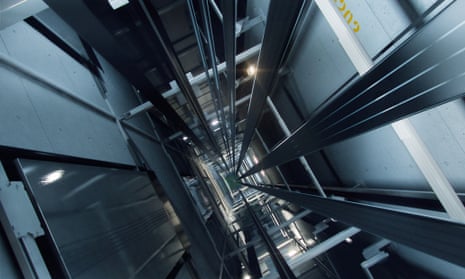Delving Into the World of Elevators: Usual Issues Faced by Numerous Lift Mechanisms
As we navigate with the upright transportation systems of contemporary buildings, lifts stick out as a crucial part of our day-to-days live. Nevertheless, behind their seamless procedure lies a globe of complex mechanisms that can occasionally come across challenges. From hydraulic lifts to traction systems and machine-room-less layouts, each lift type comes with its collection of common problems. Understanding these obstacles is important for ensuring the smooth performance of these important systems. Allow's explore the intricacies that underlie the operation of elevators and the possible problems that can arise, clarifying the elaborate internet of lift systems.
Hydraulic Elevators
Hydraulic elevators, often liked for low-rise buildings, use fluid stress to control the motion of the lift automobile (lift repair companies). This mechanism includes a hydraulic pump pressing oil into a cyndrical tube, creating the elevator to relocate the preferred direction. While hydraulic elevators are recognized for their quiet and smooth operation, they do include their very own collection of common issues
One common issue with hydraulic elevators is oil leakage. Furthermore, problems with the control system, such as defective valves or a malfunctioning pump, can cause disruptions in the elevator's activity.
Normal upkeep and timely repair services are necessary to make certain the smooth performance of hydraulic lifts. By attending to these typical problems proactively, building proprietors can decrease downtime and make sure the security and effectiveness of their vertical transport system.
Grip Elevators
When thinking about vertical transport systems in structures, another common kind besides hydraulic elevators is the grip lift. Traction lifts run utilizing a system of ropes and counterweights that relocate the elevator vehicle by gripping onto the hoist ropes. This device enables smoother and faster upright transportation contrasted to hydraulic systems.
Among the common concerns dealt with by traction lifts is rope wear. The constant activity of the ropes within the traction system can lead to put on and tear over time, possibly triggering the lift to breakdown or become harmful for use. Normal assessments and maintenance of the ropes are necessary to guarantee the lift's appropriate performance and security.
An additional problem that grip elevators might experience is connected to the control system. Problems with the control system can bring about issues such as irregular movement, hold-ups in response times, or perhaps full shutdowns. Routine screening and maintenance of the control system are vital to avoid such issues and guarantee the lift's integrity.
Machine-Room-Less (MRL) Elevators

Among the essential components of MRL lifts is the small gearless traction machine that is mounted within the hoistway. This maker efficiently drives the lift auto without the demand for large equipment located in standard traction lifts. Furthermore, MRL elevators commonly utilize a counterweight system to stabilize the automobile, further boosting their energy efficiency.
In spite of their benefits, MRL elevators might face difficulties connected to repair and maintenance due to the restricted room for devices installment. Accessibility for servicing elements within the shaft can be restricted, requiring specialized training for professionals. Proper maintenance timetables and normal evaluations are vital to ensure the continued smooth procedure of MRL lifts.
Overloading and Weight Limit Issues
Are elevators outfitted to handle excess weight loads effectively and securely? Straining and weight limit issues are important problems in elevator operations. Elevator producers style raises with lift repair near me details weight capacities to guarantee traveler security and tools long life. Going beyond these weight limits can result in various issues, including mechanical failures, delays, and security risks.
When elevators are strained, it places extreme stress on the motor, cables, and other components, possibly creating breakdowns or malfunctions. Safety devices such as sensing units and overload sensors remain in area to stop elevators from moving if they identify excess weight. Additionally, going beyond weight restrictions can bring about enhanced energy intake and deterioration on the lift system.
To alleviate overloading concerns, developing managers must prominently present weight limitations in lifts and inform occupants on the value of adhering to these constraints - lift repair companies. Routine upkeep checks by qualified professionals can likewise aid make sure that lifts are operating within secure weight specifications. By resolving overloading and weight limitation concerns proactively, building proprietors can enhance elevator safety and security and effectiveness
Electric System Failures
Surpassing weight limitations in lifts can not just lead to mechanical concerns yet additionally possibly add to electric system failings within the lift framework. Electric system failings are a critical concern in elevator operation, as they can cause unexpected shutdowns, malfunctions, or even safety hazards.
Routine maintenance and assessments are important to identify and resolve prospective electrical problems promptly, making certain the reliable and safe operation of lift systems. By sticking to weight limitations and performing regular electrical system checks, structure proprietors can alleviate the risk of electric failings in elevators.
Verdict

Hydraulic lifts, often favored for low-rise structures, make use of fluid pressure to manage the motion of the elevator car.When taking into consideration upright transport systems in buildings, an additional usual type aside from hydraulic elevators is the grip elevator. Traction elevators run using a system of ropes and counterweights that relocate the elevator automobile by clutching onto the hoist ropes. Unlike conventional lifts that need a separate maker room to house the tools, MRL lifts integrate most of the elements within the shaft, removing the need for a committed equipment area.In conclusion, lifts face usual issues such as disabled platform lifts prices uk hydraulic malfunctions, traction system failures, and electric system problems.
Comments on “London Lift Company: Relied On Specialists for All Your Upright Transport Demands”